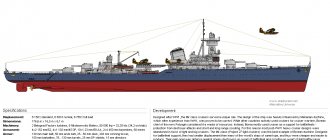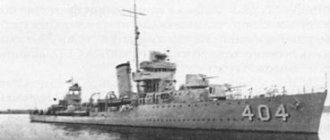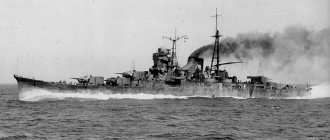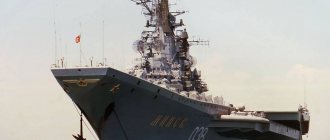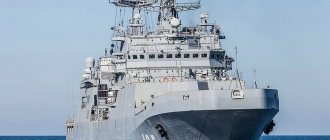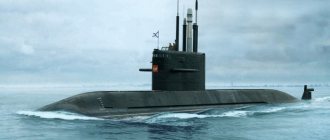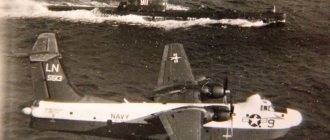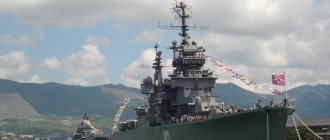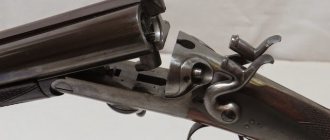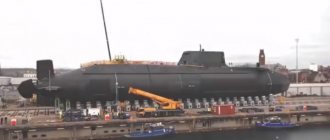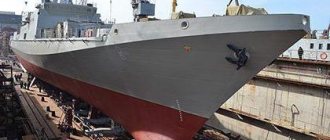Home » Alternative shipbuilding - Fleets that never existed » Large fleet of the alt-USSR - the beginning. Light cruisers of Project 26 and 26-bis
Alternative shipbuilding - Fleets that never existedAlternative shipbuilding - Fleets that never existed
Andrey 11/21/2018 2038
13
in Favoritesin Favoritesfrom Favorites 8
This article opens the series “Large Fleet of the Alt-USSR in the Great Patriotic War 1941-1945.” and is dedicated to the first large ships of the Alt-USSR - light cruisers of projects 26 and 26-bis . Subsequently, several articles are planned on the design and construction of battleships, aircraft carriers and light forces of the RKKF, as well as, possibly, an article devoted to the actions of the above-mentioned forces during the war years.
Surprisingly, but true, by some miracle a long civil war in Russia was avoided. Soviet Russia was able to begin economic restoration at the end of 1919, the NEP happened at the beginning of 1920, and Comrade Stalin reported on the early completion of the 1st Five-Year Plan in 1930 (it began in 1926 and was completed in just over 4 of the year). All this led to the fact that the economy of the AltUSSR in 1930, according to a number of indicators, was quite at the level of the USSR in the Republic of Ingushetia in 1934. How could this happen? I don’t know myself—the discussion led nowhere. However, we will proceed from the fact that the Bolsheviks somehow succeeded in all of the above.
Despite the fact that by the end of 1919 the fleet had become a completely nominal structure in terms of the number of ships, the basis of the fleet - the officer cadres - was preserved. Subsequently, in the period 1920–1931. The naval forces of the workers' and peasants' red army were replenished with the modernized battleships "Marat", "October Revolution" (the "Paris Commune" was completing modernization), three cruisers-minesags of the "Svetlana" type (7600 tons, 12 - 130 mm main gun, 29.5 knots and 250 min), two training ships (Kahul and Aurora), as well as 17 Novik-class destroyers and 8 Bars and AG submarines. It was even planned to complete the construction of the Izmail battlecruisers with new 406-mm artillery, in two- and three-gun turrets, but, unfortunately, the process was delayed (we will look at the details in the article about battleships). New ships were also built, but so far, alas, only the smallest — 8 Uragan-class patrol ships, submarines, torpedo boats... but more on that later.
History of the design of the light cruiser Project 26
Subsequently, many researchers of maritime history will call the birth of the ocean fleet of the Soviet Union the date of laying (launching or entry into service) of the cruiser "Kirov" - the first large ship built in the USSR. But in fairness, it should be noted that the main decisions that determined the future appearance of the naval forces of the Soviet state were made somewhat earlier. The beginning of the domestic ocean fleet was laid by the so-called “Great Maneuvers of the Baltic Fleet of 1929” or simply – the Great Maneuvers.
The fact is that towards the end of the 20s, naval theorists of the Red Army Navy, aware of the obvious weakness of the Soviet fleet and seeing the complete impossibility of immediately starting the construction of large warships, proposed the theory of a “concentrated strike” as a palliative. This theory was based on the assumption that a well-coordinated strike by light forces (destroyers, torpedo boats, submarines and aircraft) could destroy an enemy formation with heavy ships up to and including battleships.
While the country could only complete and modernize the ships it inherited from the Russian Imperial Navy, this idea quickly gained popularity and many supporters. But the old school of “gold chasers” argued that this theory was false - without denying the important role of the mosquito fleet in the fight at sea, they said that without large ships it would be impossible to ensure the fulfillment of the tasks facing the Red Army Navy. The confrontation between the “old” and “young” schools quickly gained momentum, and the parties could not come to a compromise. Under these conditions, having just successfully undergone a second serious operation on the stomach, People's Commissar for Military and Naval Affairs M.V. Frunze ordered the development of a program for the autumn fleet maneuvers in the Baltic so that in practice it would be possible to understand whether the theory of a concentrated strike was correct or not .
The maneuvers were prepared most carefully. Both the “old” and “young” schools understood that the result of these maneuvers would put an end to their protracted confrontation.
Almost all combat-ready ships of the Red Army Navy in the Baltic were involved in the Grand Maneuvers - the battleship "Marat", the cruiser "Profintern", the training cruiser "Aurora", the destroyers "Karl Marx", "Lenin", "Volodarsky", "Yakov Sverdlov" "Engels" ", "Stalin", "Voikov" and "Artem", as well as 3 submarines of the "Bars" type. Several new TB-1s from the Air Force took part in the maneuvers.
These forces were divided between the two sides: the “Blues” received “Marat”, “Aurora”, “Stalina” and “Voikova”, which were supposed to represent a division of heavy ships, while the forces of the “Reds” received “Profintern”, 6 destroyers, 3 submarines and six TB-1s were supposed to deliver a concentrated attack on the “blue” squadron.
In the first scenario, the “red” received a message about the presence of the enemy in a certain square; the course and speed of the “blue” ships were also reported. After which the “reds” had to use 6 EM, 3 submarines and six TB-1s to detect the “blues” (who were not forbidden to maneuver at their own discretion) and organize that same “concentrated strike”. Despite the fact that they had been preparing for such a scenario all summer, it ended in complete disarray.
Of the three attempts, only once was one submarine able to come within visual range of the Marat, but even she was unable to get beyond the range of a torpedo salvo. In all three cases, the TB-1s were able to detect and “attack” the enemy (they were required to find and fly around the “blue” battleship in a circle) - but the TB-1 battleship itself was flown only once. In another case, the Reds’ Profintern, which was not participating in this stage of the exercise, was “attacked,” and in the third, an innocent Swedish cargo ship was “attacked,” moreover, 70 miles from the maneuver area. At the same time, the battleship was discovered by only a couple of TB-1s completely by accident - having strayed from the main group of aircraft. Thus, out of 18 sorties, only 2 could be considered conditionally successful. But, naturally, the only air attack was in no way coordinated with the actions of the destroyers.
But the destroyers fared much better. They searched in two formations of 3 ships each, and all three times they managed to find the “blue” ships. But detecting the enemy is not enough - you also need to coordinate an attack on the battleship, and with this, not everything turned out as we would like.
In all three cases, the battleship was detected by one EM formation, which was forced to direct and wait for the ships of the second detachment. After this, the destroyers maneuvered to occupy the most favorable position for attack (the destroyers tried to attack from several directions). But almost all this time they were within reach of the main caliber of the battleship, and then they still had to go on the attack under its fire... And the situation became completely catastrophic for the “reds” when the “blues” had the opportunity to use their own pair of destroyers. "Voikov" and "Stalin" were deployed as patrols in threatening directions. as a result, the “blue” formation had the opportunity not only to prepare for battle, but also to beat the “red” half-flotillas.
Subsequent analysis of the results of the maneuvers and the subsequent staff games showed that a lone battleship, attacked during the day from different directions by a flotilla of 6-8 destroyers, has some chances of being damaged and, perhaps, even disabled - but unlikely to be sunk. But the destroyer flotilla will lose at least half of its ships. But even such a result will be achieved only on the condition that the battleship does not actively maneuver - in the last attack, the commander of the Marat, Captain 1st Rank Meshchersky, did not wait for both EM formations to deploy for the attack - having developed a full twenty-three-knot move, he attacked one detachment of destroyers, while the half-flotilla that came from the opposite side was forced to catch up with the battleship going at full speed - and, thereby imposing a battle sequentially on first one EM flotilla, and then the other, caperang Meshchersky defeated the “Reds” almost dryly.
It also turned out that when a battleship is covered by a cruiser and destroyers, the probability of a successful daytime attack tends to zero.
In the next episode of the exercise, six destroyers tried to attack the “blue” formation without separating. But the “blues” pushed the “Aurora” into a threatening direction or (if the old lady did not have time) a couple of their destroyers, which imposed an artillery battle on the “reds”, and this was no good - the commanders of the “reds” were no longer in the mood to attack the battleship, they were forced to fight with the cruiser, while also being under fire from the battleship's main battery.
The situation improved somewhat when the “Reds” were allowed to use the Profintern - the former Svetlana easily engaged and suppressed the old Aurora, thereby making way for a flotilla of destroyers. However, an analysis of the maneuvering showed that the chances of the leading light cruiser destroying the destroyer were extremely high - from heavy shells from the battleship.
The night battles showed completely different results.
A total of 3 battles were held. In each case, the Red destroyers were divided into twos. In the first battle they failed to detect the enemy at all. In the second, the destroyers “Volodarsky” and “Yakov Sverdlov” literally “stuck” their noses into “Marat”, cutting through the “blue” formation between “Marat” and “Aurora”. The destroyers were discovered by the “blues” at the very last moment, after they “fired torpedoes” at the “Marat”. Observers considered the battleship dead. For the third time, the “blues” were still the first to discover a pair of destroyers “Lenin” and “Karl Marx”, prepared for battle, turned on the searchlights and exemplarily destroyed both destroyers even before they were able to even deploy artillery and torpedo tubes in the enemy's side. But that’s where the “blues’” successes ended - the other two twos and “Profintern”, attracted by the bright illumination, immediately rushed to “Marat”. The pair “Volodarsky” - “Yakov Sverdlov” was far enough away and could not, in the ensuing darkness (after simulating the execution of “Marx” and “Lenin”, the “Blues” turned off the searchlights) to attack the heavy ships of the “Blues” - but they came across a ship heading towards patrol of “Voikov” and after a “fierce” and fleeting battle, they lost each other. But the other two destroyers successfully fired at... the Aurora, mistaking it for the Marat. But the Profintern distinguished itself most of all - the cruiser managed to sneak up on the Marat unnoticed and fire a three-torpedo salvo almost point-blank. And the words of the Profintern commander, spoken by him during the attack: “For the classics of Marxism-Leninism... Oh-hon!!!” became winged. Although later, at a party meeting, the wick still received a caperang for the classics.
The following exercises - night shooting at target vessels - showed that in a night battle the correct combination of rate of fire and the power of guns is extremely important. In a night battle against light forces, the giant 305 mm Marat guns were almost useless due to their slow aiming and low rate of fire - they could only successfully hit large targets and only if they could be detected in advance. But the 102-mm “yapper” “Novikov”, having an acceptable rate of fire, did not produce a significant effect. Despite the fact that at short distances the percentage of hits sometimes reached 40-50%, the projectile was too light and did not contain the required amount of explosives. The best results in quickly disabling a “conditional enemy” were shown by the 130-mm artillery of the Profintern and the 120-mm medium caliber of the Marat.
Attempts to simulate an attack by torpedo boats on a battleship (destroyers on very long cables and towing target boats at high speed) showed the 120-mm medium caliber "Marat" and its 76-mm anti-aircraft guns (model 1915/1928, according to essentially a Lander with an elongated barrel) are almost useless when repelling an attack from torpedo boats - the former could only conduct barrage fire, and the latter had a rate of fire that was too low to hit high-speed targets. But the 12.7-mm machine guns hit superbly - but the weak damaging effect of the bullets and the short fire distance meant that the machine guns simply did not have time to disable the “torpedo boats” before they launched torpedoes.
Based on the results of the analysis of the Grand Maneuvers, appropriate conclusions were drawn. Frunze wrote:
“Now there is no doubt that: 1) The Mosquito Fleet, using the “concentrated strike” concept, does not have the ability to replace capital ships. 2) Submarines cannot operate effectively against enemy warships. 3) The Red Army Navy must have its own aviation for constant training of pilots in the specifics of naval warfare. 4) Daytime attacks on heavy enemy ships, covered by security forces, can be undertaken only in exceptional cases. 5) The main form of naval combat of light forces against heavy enemy ships is night naval combat.”
Based on the results of the Grand Maneuvers, organizational conclusions were made for almost all types of ships and naval weapons. Among other things, the tactics of using light fleet forces in battle against superior enemy forces were determined.
A prominent Soviet naval figure, Vladimir Mitrofanovich Orlov wrote:
“The task of the light forces of the fleet will be to search and establish contact with the enemy during daylight hours. Having discovered the enemy, our flotillas must, taking advantage of superior speed and not approaching the enemy to the range of his actual fire, take the correct position in relation to the enemy ships, placing the enemy between themselves and the sunset. With the onset of twilight and darkness - attack, being invisible to the enemy.
For these purposes, our destroyers must be accompanied by a light cruiser. To search for the enemy, he must carry a seaplane, or preferably two. The speed of the cruiser must be no lower than that of the destroyers, then such a formation will be able to keep large ships away. The cruiser will give our destroyers the necessary stability and will scatter enemy destroyers if they separate from their main forces and try to attack. To do this, the ship must be sufficiently protected against the 100-120 mm guns of modern destroyers. During an attack, it will clear a path through the light forces of the enemy with fire, and, if necessary, will distract their cruisers. Such a cruiser itself must be equipped with a sufficient number of torpedo tubes - at least a dozen torpedo tubes. The main caliber will be sufficient with 152 mm in two- or three-gun turrets - the rate of fire and damaging effect of six-inch shells will ensure the disabling of any light enemy ship and even a cruiser in a short-lived night battle. To protect against aircraft and torpedo boats, it is necessary to install anti-aircraft guns of 76-105 mm caliber and machine guns of 37-47 mm caliber.”
At the beginning of 1930, an operational-tactical task was formed for the development of a light cruiser, according to which its future performance characteristics were defined as:
- Standard displacement – 6500 t
- Speed – 36-38 knots
- Cruising range - at least 3600 miles economically
- Armament - 3-4 two-gun turrets with 152 mm guns (later the choice was made in favor of three-gun turrets). 6x100mm universal guns, 4x37mm machine guns, 12x12.7mm machine guns, 4x3-tube torpedo tubes.
The ship received the designation “Project 26 light cruiser”
Since it was clear that it would be extremely difficult to design and build such a cruiser on our own, negotiations were urgently started with shipbuilding firms in the USA, Germany, France and Italy. Negotiations with the Italians were most successful, and in 1931 a delegation was sent to Italy to purchase drawings and receive other technical assistance in the construction of the first cruisers of the Red Army Navy. agreed not only to provide drawings of the newest Italian cruiser Raimondo Montecuccoli (by the way, not even laid down yet!), but also to assist in the supply of two sets of power plants and many other cruiser mechanisms.
It took almost a year to adapt the drawings to the requirements of the Red Army Navy. Only in April 1932, at the Leningrad plant named after S. Ordzhonikidze, the first-born of the Soviet fleet, the light cruiser Kirov, was laid down. The laying of his “sistership” “Voroshilov” took place at the Nikolaev plant No. 198 named after. Marty is a month late.
Notes
Comments
- Since August 3, 1957 "Slava"
- Head.
- All data for December 1941
- All data for December 1941
- All data for September 1939
- Before modernization, they carried 6x1 200 mm guns in single-gun turrets.
- Before modernization, they carried 3x2 200-mm guns in two-gun turrets.
- Before modernization, they carried 4x1 76-mm guns.
- Before modernization, they carried 4x1 76-mm guns.
Used literature and sources
- Marine company 2009/3 p. 10
- At first it was called “Kaganovich”, from 1946 - “Lazar Kaganovich”. Renamed "Petropavlovsk" on August 3, 1957
- Platonov A.V.
Encyclopedia of Soviet surface ships, 1941-1945 / A.V. Platonov. - St. Petersburg: Polygon Publishing House LLC, 2002. - P. 96. - 5,000 copies. — ISBN 5-89173-178-9. - Patyanin S.V., Dashyan A.V., Balakin K.S.
etc. All cruisers of World War II. - M: Yauza, EKSMO, 2012. - P. 29. - ISBN 5-699-19130-5. - Conway's All the World's Fighting Ships, 1922-1946. - New York: Mayflower Books, 1980. - P. 420. - ISBN 0-83170-303-2.
- Patyanin S.V., Dashyan A.V., Balakin K.S.
etc. All cruisers of World War II. — P. 313. - Patyanin S.V., Dashyan A.V., Balakin K.S.
etc. All cruisers of World War II. — P. 437. - Patyanin S.V., Dashyan A.V., Balakin K.S.
etc. All cruisers of World War II. — P. 441. - Patyanin S.V., Dashyan A.V., Balakin K.S.
etc. All cruisers of World War II. — P. 74. - Alexander Donets
York-class heavy cruisers
Description of design
Frame
Riveted, with forecastle and trapezoidal stern. Unsinkability was ensured by the presence of 19 main waterproof compartments; the cruiser remained buoyant when any three compartments were flooded. Seaworthiness was also quite high - due to the use of a mixed set-up system, Project 26 cruisers turned out to be much stronger than their Italian counterparts. Subsequently, the cruisers of Project 26 and 26bis withstood storms of force 8 and even force 10 without difficulty or damage.
Booking
The side belt of homogeneous armor was 3.4 meters high, rising 2.3 meters above the water, and had a thickness of 50 mm. Together with a 50-mm citadel and a lower deck of the same thickness, resting on the upper edge of the armored belt, they formed a citadel extending over 65% of the ship's length. The conning tower had a thickness from 50 to 175 mm. The steering compartment, torpedo tube aiming posts, and anti-aircraft artillery shields were protected by armor plates 14-20 mm thick. In general, such armor adequately withstood the shells of destroyers of those years, but was frankly weak against 150-155 mm shells of light cruisers.
The role of the PTZ on cruisers was performed by the second bottom, as well as by the bulkheads that formed corridors for electrical wires below the waterline.
Armament
By the end of 1932, USSR designers managed to create a very successful 152-mm gun (index - B-38), capable of throwing a 52-kg projectile (initial speed - 850 m/sec) at 25,500 meters. What is surprising is that this gun was created in the shortest possible time (development began in October 1929, and in September 1932 the gun was submitted for state testing) and was extremely successful. But unlike most other developments, design work on the B-38 was carried out from scratch - there were simply no suitable artillery systems that could be used as a basis for designing a six-inch gun. The tower installation (MK-5) was designed by the Leningrad Metal Plant, with the help of Italian specialists. However, the dubious innovation of the Italians - placing guns in one cradle - was categorically rejected. Especially in order to ensure the survival of the main battery artillery at short distances in night combat, the towers received the strongest armor: Front - 175 mm Roof - 75 mm Side - 65 mm Stern - 60 mm At the same time, the thickness of the barbettes reached 130 mm. Accordingly, the turret turned out to be very heavy (the weight of the rotating part is 216 tons), but its armor protection would be the envy of many heavy cruisers.
According to the plan, the rate of fire of the turret was supposed to be 6-7 shots per barrel, but in practice, even after treating numerous “childhood diseases,” the actual rate of fire of the turret installation did not exceed 12-15 rounds per minute (4-5 shots per barrel).
The creation of the B-38 cannon and MK-5 turret installation is the greatest achievement of Soviet gunsmiths. Which, alas, cannot be said about 100 mm anti-aircraft guns and 37 mm machine guns.
The 100-mm universal B-14 gun never materialized: the disgusting performance of semi-automatic and recoil devices, the unreliability and unsatisfactory position of the rammer, which made manual loading at high elevation angles impossible, the impossibility of using SSP - this is not a complete list of the fatal defects of this artillery systems. The gun did not pass state tests either in 1932 or in 1933 (looking ahead a little, I will say - and never at all). As a result of this, the Project 26 cruisers had to be equipped with the antediluvian 102-mm B-2 guns. Being nothing more than a modification of the famous 102-mm guns from the Obukhov plant, developed for the Novik destroyers, these guns theoretically, by increasing the elevation angle to 60 degrees, could be considered anti-aircraft - but the speed of their vertical and horizontal aiming (no more than 5-6 degrees per second) was completely insufficient even for the mid-20s, when this weapon was created. And by the beginning of the 30s, such characteristics did not allow the “anti-aircraft” gun to even conduct barrage fire on aircraft. But, for lack of anything better, 6 such guns were installed on the Kirov and Voroshilov, firing 16.45 kg shells at a distance of no more than 90 cables and having a rate of fire (depending on the elevation angle) from 6 to 12 shots per minute. The cruisers were equipped with 2 MPUAZO “Horizont” posts, but they could not control the fire of the B-2.
As for the 37-mm 4-K assault rifles, due to the fatal defects of the German prototype, these assault rifles never appeared. At all. They didn't even get to state testing.
As a result, the Kirov and Voroshilov had to install 45-mm 21-K guns, developed for submarines and small ships. Even in theory, the 21-K semi-automatic machine could not be considered as a replacement for a full-fledged anti-aircraft machine gun - but the reality turned out to be worse than the theory. The fact is that all the “automation” of the 21-K consisted of a semi-automatic shutter, which... did not work. As a result, the cruisers received 6 of these guns, which had a rate of fire of no more than 20-25 rounds per minute, a very primitive sight and the absence of a remote fuse for the projectile.
Also on the Kirov and Voroshilov they installed 4 12.7-mm DK machine guns - quite reliable and formidable weapons, the only drawback of which was too little power for the ship’s artillery system.
The torpedo armament was very powerful - the cruiser was equipped with 4 three-tube torpedo tubes 39-Yu, equipped with the Molniya central semi-automatic aiming system.
The project did not provide for electronic weapons, although radars were subsequently installed on cruisers.
Aviation weapons - Project 26 cruisers were unique in that their construction and design of the catapult (the project included the installation of two aircraft) were carried out even before these aircraft began to be developed. In fact, a catapult was created in the image and likeness of the Italian Montecuccoli - and Beriev had the dubious honor of developing aircraft for this catapult. Subsequently, the cruisers received two KOR-1 seaplanes, and just before the war they were replaced by KOR-2
Chassis
Two Italian-made GTZA with a rated power of 55,000 hp. each was supposed to develop 126,500 hp in afterburner. total power, which was supposed to provide the cruiser with 37 knots of full speed. However, for some reason the afterburner did not work out - although the turbines regularly maintained their rated power, with afterburner they managed to achieve only 113,500 hp, which allowed the cruiser to develop 35.98 knots with a displacement of 8610 tons. Voroshilov was luckier - its turbines developed 122,500 hp. and he demonstrated a speed of 36.75 knots.
Both cruisers were launched in 1933 (Kirov in October, Voroshilov in December) and entered service in 1935 and 1936, respectively.
There was no doubt that these cruisers were quite at the level of world standards, but still they had significant shortcomings that required correction, so the next 4 ships of the series were built according to the improved 26-bis project.
The most glaring drawback of the Project 26 cruisers was their completely insufficient anti-aircraft weapons.
The Italians could do nothing to help. Their 100-mm twin Minisini systems and anti-aircraft guns of the “slightly improved pom-pom” type could not be considered modern. Negotiations with the United States did not lead to success, but Germany...
At first, it seemed that negotiations with German gunsmiths reached a dead end before they even began - it turned out that the Germans simply did not have the required 100-mm anti-aircraft guns. All the Germans could offer was an 88-mm artillery system. However, the Soviet delegation, after studying the documentation and demonstrations of the German anti-aircraft gun, strongly recommended it for purchase.
And indeed, during the design of 100-mm anti-aircraft guns, it became clear that the desired vertical/horizontal aiming speed can only be achieved by using electric motors to aim the gun. The German 88-mm artillery system, being somewhat lighter, gave a completely acceptable manual aiming speed. But the significantly lower mass of the projectile (9 kg versus 16-17 kg shells of Soviet 102-mm guns) in combination with an excellent semi-automatic wedge bolt made it possible to develop a rate of fire of 15-20 rounds per minute.
This is how the famous German Flak-18, known as Acht-Komma-Acht, ended up in service with the Red Army Navy.
As for anti-aircraft guns, the Red Army Navy showed interest in both a 40-mm gun, which was supposed to become the main weapon for short-range air defense, and in lighter weapons of 20-25 mm caliber.
With the 40-mm machine gun, the issue was resolved quickly - just at this time the Bofors company introduced its 40-mm L/60. The Swiss themselves were wary of this development, but Soviet specialists simply had nothing to choose from - especially since the artillery system looked quite good... In the end, by 1935, the USSR, together with specialists Bofors and Hasemeier, managed to launch the production of a four-barrel 40 stabilized in two planes -mm machine gun. In terms of its characteristics, it was quite consistent with the American and English Bofors, but the barrels were located differently - in pairs above each other.
A small-caliber machine gun was not critically needed for large ships, but it was clear that the emerging torpedo boats and other small items needed something more than 7.62 mm or even 12.7 mm machine guns - and the 40 mm machine gun looked too heavy for a torpedo boats. So it was decided to replace 12.7 mm machine guns with 20-25 mm artillery systems for all new ships of the Land of the Soviets. Previous attempts to use the German prototype - a 20-mm artillery system - were unsuccessful. By the way, the Germans themselves did not succeed either - their Flak-30 was only brought to fruition by the end of the 30s. So, in the end, the choice was made in favor of the very good Oerlikon S, the licensed production of which was established at the Krasnoyarsk Machine-Building Plant.
Therefore, the four cruisers of the modernized project (26bis) had a completely different level of anti-aircraft weapons - 8x88-mm universal guns, 6x4-barreled 40-mm 46-K, and 14x20-mm machine guns.
In addition, protection solely from 120-130 mm shells of destroyers for the cruiser was considered completely insufficient. The 50-mm deck generally provided an acceptable level of horizontal armor, but the 50-mm armored belt of the Project 26 cruisers did not hold a 152-mm projectile at distances closer than 85 mm. Therefore, it was decided to increase the thickness of the armor belt and traverses to 100 mm, which would make it possible to successfully withstand a 152-mm projectile at distances greater than 67 cables, and a 203-mm projectile at 114 cables.
It was also decided that just one control panel for a light cruiser was too little, so the Project 26-bis cruisers also had a second control panel in the stern. The four-legged mast was replaced with a tower-like superstructure.
The hull and chassis remained the same, with the exception that the same turbines were installed on the Project 26-bis ships, but of Soviet production - GTZA TV-7. In general, the licensed copies turned out to be even more successful than their Italian prototype. Due to a slight increase in the efficiency of boilers and fuel reserves, it was possible to significantly increase the cruising range. The main caliber artillery has not changed, but the fire control systems have been improved - Project 26-bis ships received the Gorizont-2 MPUAZO and an improved Molniya.
But perhaps the most important difference from the Project 26 cruisers was the appearance of the Redut radar at the ship design stage. Naturally, all the innovations had to be paid for with an increase in displacement and some loss of speed. However, at that moment the prevailing opinion in the Red Army Navy was that what was important was not the record speed of 36-38 knots, which could be maintained for at most 2-3 hours with afterburner, but the ship’s ability to sail for a long time at a speed of at least 34 knots without afterburning the vehicles. .
Main tactical and technical elements of project 26 and 26 bis cruisers
| Elements | project 26 | project 26 bis |
| Main dimensions, m: | ||
| • longest length | 191,3 | 191,3 |
| • midsection width | 17,7 | 17,7 |
| • draft at full displacement | 6,15 | 6,3 |
| Displacement, t: | ||
| • standard | 7880 | 9050 |
| • normal | 8590 | 9655 |
| • full | 9436 | 10 590 |
| Speed, knots: | ||
| • full speed (afterburner) | 35,98 | 35,5 |
| • full speed (without afterburner) | 35,5 | 34,3 |
| • cruising | 25,2 | 25,2 |
| • economic | 18 | 17 |
| GEM power, hp: | ||
| • nominal | 110 000 | 110 000 |
| • in afterburner | 113 500 | 126 900 |
| Cruising range at economic speed, miles | 3 750 | 5 190 |
| Fuel reserve, t: | ||
| • normal | 610 | 650 |
| • full | 1290 | 1650 |
| • maximum | 1550 | 1770 |
| Weapons: | ||
| • main caliber | 3×3-152 | 3×3-152 |
| • universal caliber | 6×1-102 | 8×1-88 |
| • anti-aircraft guns | 6×1-45 | 6×4-40 |
| • machine guns | 4×1-12,7 | 14×1-20 |
| • torpedo tubes | 4×3-533 | 4×3-533 |
| • airplanes | 2 KOR-1 | 2 KOR-2 |
| Booking, mm: | ||
| • board | 50 | 100 |
| • traverses | 50 | 100 |
| • deck | 50 | 50 |
| Main towers, mm: | ||
| • forehead | 175 | 175 |
| • roof | 75 | 75 |
| • side walls | 65 | 65 |
| • back wall | 60 | 60 |
| Conning tower, mm: | ||
| • walls | 175 | 175 |
| • roof | 100 | 100 |
| • tiller compartment | 20 | 30 |
| • KDP and SPN | 6-8 | 8-14 |
All four Project 26-bis cruisers were laid down in 1933–1934 and entered service in 1937–1938.
Links
Project 26bis Maxim Gorky • Molotov (Slava) • Kalinin • Lazar Kaganovich (Petropavlovsk) Other ships and types "Arkhangelsk" • project 23/type "Soviet Union" •
project 24Heavy cruisers "Petropavlovsk"/"Tallinn" • project 69/type "Kronstadt" •
project 25Light cruisers type "Svetlana" “Red Crimea” • “Chervona Ukraine” • “Red Caucasus” projects and 26 bis “Kirov” • “Voroshilov” • “Maxim Gorky” • “Molotov” • “Kalinin” • “Kaganovich” project 68 “Chapaev” • “Valery Chkalov” • “Zheleznyakov” • “Frunze” • “Kuibyshev” • "Ordzhonikidze" •
"Sverdlov"Other cruisers "Murmansk" • "Comintern" • "Kerch" Destroyers type "Novik" “Yakov Sverdlov” • “Frunze” • “Stalin” • “Artyom” • “Engels” • “Uritsky” • “Volodarsky” • “Voikov” • “Karl Liebknecht” • “Valerian Kuibyshev” • “Lenin” • “Karl Marx” » • “Kalinin” • “Nezamozhnik” • “Dzerzhinsky” • “Zheleznyakov” • “Shaumyan” project 7/type “Angry” "Cheerful" • "Quick" • "Brisk" • "Merciless" • "Impeccable" • "Alert" • "Wrathful" • "Proud" • "Terrible" • "Threatening" • "Loud" • "Thundering" • "Crushing" » • “Sharp-witted” • “Guardian” • “Swift” project 7-U/ type “Storozhevoy” “Fierce” • “Free” • “Angry” • “Strong” • “Swift” • “Nice” • “Brave” • “Smart” • “Committed” • “Smart” • “Capable” • “Guardian” • “Sturdy” » • “Terrible” • “Strict” • “Slender” • “Stately” • “Severe” Leaders “Leningrad” • “Moscow” • “Kharkov” • “Minsk” • “Baku” • “Tbilisi” • “Tashkent” • project 48/type “Kiev” Delivered under Lend-Lease “Bold” • “Active” • “Valiant” • “Dignified” • “Friendly” • “Hot” • “Burning” • “Hard” • “Tenacious” Captured “Amethyst” • “Flying” • “Light” • “Dashing” • “Dexterous” • “Monsoon” • “Hummock” Other destroyers Project 45 “Experimental” • Project 30 “Fire” Small ships Patrol ships type "Hurricane" • project 29/type "Yastreb" • project 43/type "Brilliant" • type "Kirov" • type "EK" Torpedo boats type "G-5" • type "• type "D-3" • type "SM-3" • type "Sh-4" • type "Komsomolets" Minesweepers Basic minesweepers of Project 53 type "Fugas" • Squadron minesweepers of "Vladimir Polukhin" type • Offshore minesweepers of Project 253L • Sea minesweepers of "AM" type • Basic minesweepers of "YMS" type Submarine hunters Large hunters of project 122 type “BO-2” • Large hunters of project 122-A • Large hunters of project 122-bis • project 194/BMO • Small hunters of project MO-4 • Large hunters of “PS” type Italic unfinished ships and classes of ships that have not entered service are marked
